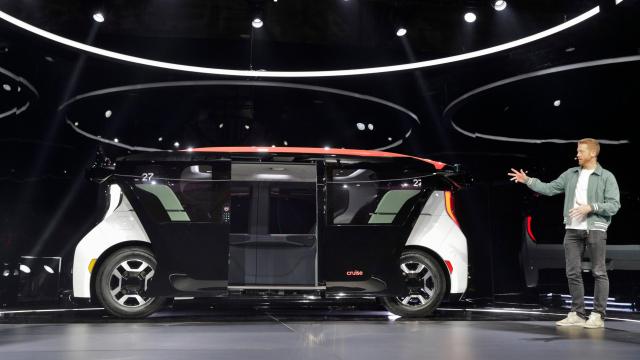Cruise will launch its autonomous taxi service in Phoenix and Austin before the end of 2022, according to Kyle Vogt, the CEO of driverless car company. And Vogt promises that his company is planning to expand rapidly in 2023 if everything goes to plan.
“The question we should be asking is no longer whether the tech works, but ‘is my city next’?” the CEO said at the Goldman Sachs Communacopia and Technology Conference on Monday, according to audio published by Seeking Alpha.
“Today we’re announcing for the first time that in the next 90 days, before the end of 2022, Cruise will be live in two more markets, Phoenix and Austin. It will initially be small scale, but driverless and revenue generating with scaled operations to follow next year,” Vogt continued.
Cruise, which was founded in 2013 and purchased by General Motors in 2016, currently operates the service in San Francisco during late night hours using a Chevy Volt-based vehicle called the Cruise AV. And the driverless taxi service being launched in Austin and Phoenix will still use that model, but the first Cruise Origin vehicles, seen above, will be rolling off the line in 2023.
Vogt praised the design of his company’s Origin, explaining it looked like something out of HBO’s Westworld TV show, and noted that there have been plenty of regulatory hurdles along the way. It took 33 months to receive all the necessary permits for Cruise to operate in San Francisco, according to Vogt, but the permits for Austin and Phoenix took just three weeks.
Consumers have been waiting on robot taxis for over a century. Sometimes they were envisioned as something that Americans would own themselves, as was often predicted in the 1950s. And companies like Tesla have been trying to make that happen here in the 2020s, despite numerous hurdles along the way. But with the advent of ride-hailing services like Uber, the focus at the start of the 2010s started to shift into more of a taxi-hailing model, with many people predicting no one in a given city would actually own a car.
Vogt highlighted some of the big reasons he believes consumers enjoy driverless taxis more than sitting in cars with human Uber drivers.
“There’s no more anxiety about getting in a car with a stranger, which is something we hear over and over from women. There’s no more being forced into your driver’s personal life, you know, you’re overhearing their personal conversations, you’re listening to their music. And no worrying about whether if your driver is alert or whether they’re staring at their phone or half sleep,” Vogt said.
Where does Vogt see the company going after 2023? The CEO said he expects Cruise to hit $US1 ($1) billion of annual revenue by 2025.
‘Moving beyond that to 2024 and 2025, the question becomes how quickly can we build AVs? And that’s the number one thing that influences top line revenue. It’s pretty simple, more AVs, more revenue potential. If you don’t have AVs, you can’t make money and also tied to profitability. Fortunately, as you can see here, that’s something GM knows how to do,” Vogt said.
“And at Cruise, we think of it like a cheat code in a video game. We get to skip forward ten years. Because other companies are struggling to figure out how to build EVs at all or do it reliably and at scale. And we’ve got a partner in GM who can do it like the back of their hand.”
